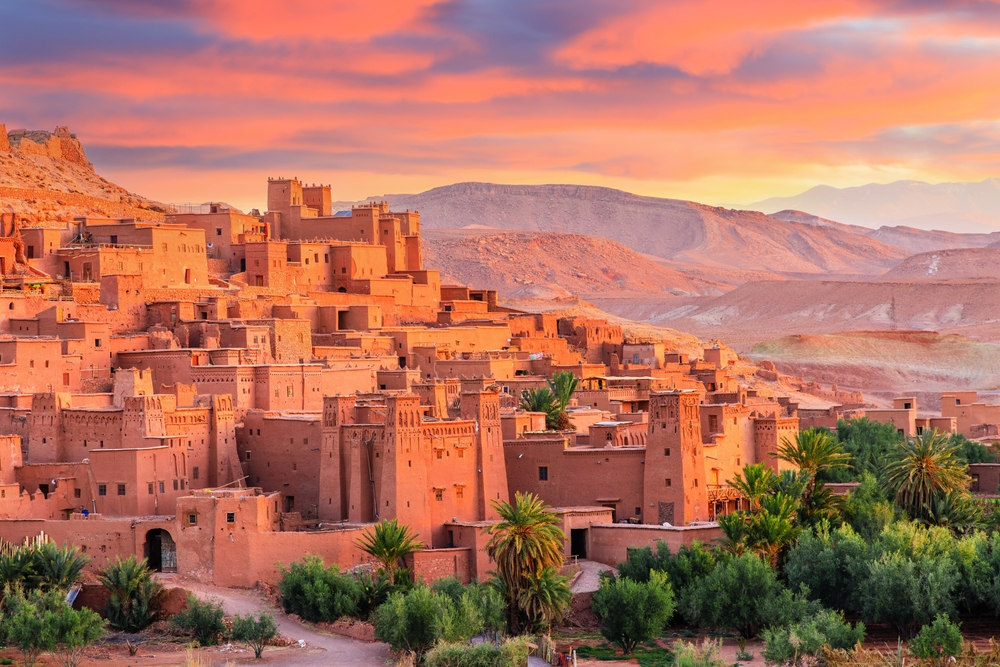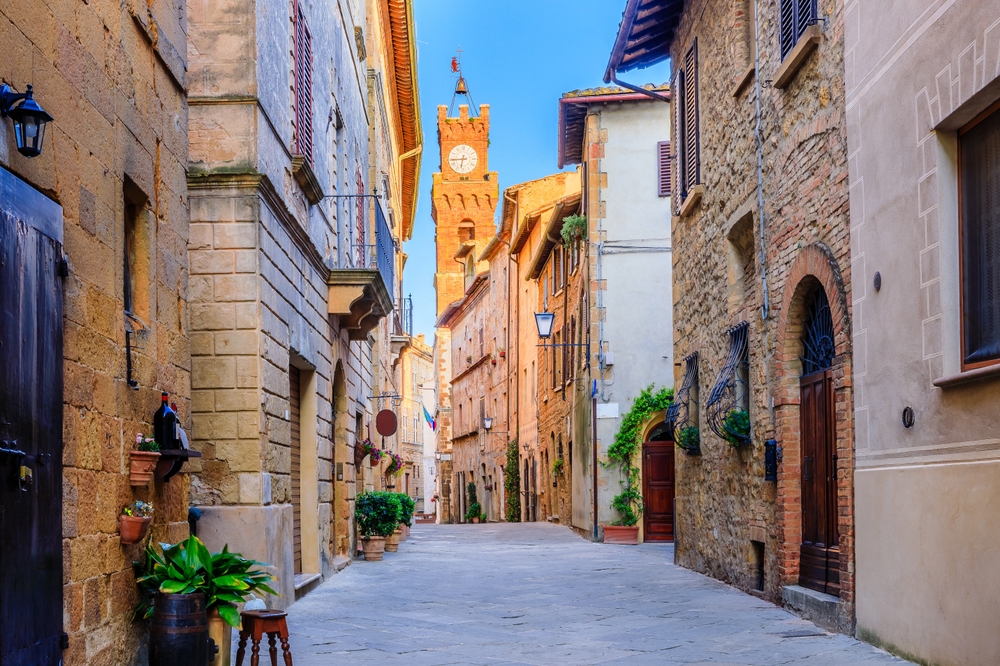As dynamic and picturesque today as when it first opened in 1832, this park remains one of the state’s best-kept secrets.
If you want to branch out from the typical vacation ports of call — pricey Aspen, say, or a sleepy beach resort in South Florida — the vast, forested state of Arkansas is definitely worth considering. Why? Because it’s home to a rare national treasure: an entire park devoted to hot springs.
Clusters of geothermal pools can be found in western states like Colorado and New Mexico, but none represent as important a milestone in the National Park Service catalog as Hot Springs National Park. This remarkable land was set aside by the government in 1832, making it the oldest federal reserve in the U.S. — it predates even Yellowstone, which is traditionally recognized as the country’s first national park, by 40 years.
Here’s a look at some of our favorite things to do in Hot Springs National Park if you want to incorporate Arkansas’s natural wonder into your itinerary on your next mountain-town adventure.
Buckstaff Baths
Much of the city’s delightful architecture has been preserved in charming Neo-classical and Spanish-style museums along Bathhouse Row. But there’s one bathhouse that has operated continuously since 1912, making it the city’s longest-running facility. Equipped with steam cabinets, needle showers, whirlpool tubs, and Swedish massage therapists, Buckstaff Baths offers separate floors for men and women, and its no-reservation policy for baths and massages works in favor of travelers who wish to take a spontaneous trip to the healing waters — appointments are needed for manicures, pedicures, and facials, however. Though it’s open Monday through Saturday starting at 8 a.m., many locals like to line up beforehand, so make sure you get there early.
Quapaw Baths
If you’re in need of something more full-service, head to Quapaw Baths, a contemporary, European-style spa facility. Like at Buckstaff, the thermal water is piped directly into the soaking pools, but the menu also offers services such as foot scrubs, steamy facials, herbal-infused towel wraps, and something called a Mudslide — a signature service that incorporates a full clay body mask — followed by a MicroSilk treatment, which uses tiny oxygen bubbles that reach into the pores to promote skin cell growth and reduce wrinkles.
Gallery Walk
For culture lovers, Hot Springs National Park has also made a name for itself as a serious art destination. That’s most apparent at the Ozark Bathhouse, a 1922 Spanish Colonial Revival building made of white stucco and red clay tile. Though it stopped operating as a bathhouse in 1977, it reopened in 2014 as a fine art gallery. Meanwhile, other galleries spread across Central Avenue come alive every first Friday of the month for “Gallery Walk,” when local artists open their studios for mingling and live music.
The Sunset Trail
The city of Hot Springs is built right into the park itself, so getting into nature isn’t hard to do. One popular route, the Sunset Trail, leads to several impressive mountain overlooks that face away from the city entirely. On its own, the 8.9-mile loop is doable for beginner or moderate-level hikers — if you’re seeking something more rigorous, try coupling it with adjacent trails for a complete 14-mile loop all the way around Hot Springs National Park.
Superior Bathhouse Brewery
Another reason Hot Springs National Park appeals to more than just bathers? Its micro-brewery. Superior Bathhouse Brewery incorporates real water from the springs into its pale ales and golden stouts, resulting in an immersive experience of the park’s unique hydro system that doesn’t involve an hour-long soak.
Hot Springs Mountain Tower
For one of the best overlooks in the entire state, head to the Hot Springs Mountain Tower, where you can enjoy beautiful 360-degree views of the surrounding Ouachita Mountains, the Diamond Lakes, and Hot Springs Mountain. To reach the tower, either embark on a scenic 1.5-mile hike from Fountain Street or drive straight up to the parking lot. From there, you can ride the elevator the remaining 216 feet to the top.
Bathhouse Row Emporium
If you’ve had a great trip and want to take something special home to remember it by, plan to stop by the Bathhouse Row Emporium before you head home. Located inside The Lamar Bathhouse, the shop is open daily, selling all sorts of souvenirs highlighting the area’s history, plants, animals, and of course, bath products — everything from fancy soaps and luffa sponges to bottles you can fill with water from the hot springs. Several products, including coffee, other hot drinks, and several spa items, are actually made with the hot spring’s natural waters.
Fordyce Bathhouse Visitor Center
Worth a look, especially after new exhibits featuring the geology behind the natural springs were installed in early 2023, the Fordyce Bathhouse Visitor Center is open daily, with park rangers ready to answer any questions about the national park or the area’s history. Originally opened in 1915, the 28,000-square-foot Fordyce Bathhouse was once the largest on Bathhouse Row, but closed its doors in 1962 before extensive restoration efforts were made in 1989. Today, it’s a must-visit part of any Hot Springs trip.
Hot Springs Mountain Scenic Drive
No visit to this national park is complete without cruising down the 3.6-mile Hot Springs Mountain Scenic Drive, a major Hot Springs National Park highlight — as long as you’re a fan of switchbacks, that is. Originally built as a carriage road during the 1880s, the long and winding road takes you from downtown Hot Springs (just off Central Avenue at the end of Fountain Street) to a lovely picnic area and overlook featuring a historic pagoda that dates back to 1910. The drive eventually takes you past the Hot Springs Mountain Tower (mentioned above) and the North Mountain Loop before leading you back to town.
Western Mountain Scenic Drive
On the other side of the national park, the Western Mountain Scenic Drive takes visitors from Whittington Avenue or Prospect Avenue up to the Summit Loop, which features three scenic overlooks. Enjoy views of Bathhouse Row and the old Army–Navy Hospital from the lower overlook, and Lake Hamilton and the Trap Mountains from the Summit Overlook; the Western Mountain Picnic Overlook is also home to a historic trail shelter house that dates back to 1924. Keep an eye out for Arkansas Novaculite once you reach the top, a type of silica stone once used by Indigenous Americans to make tools (Europeans later used them for whetstones).
Northwoods Trails
Mountain biking enthusiasts, rejoice! Hot Springs National Park’s Northwoods Trails system offers more than 31.5 miles of trails for biking, hiking, trail running, and nature viewing, all while letting visitors criss-cross their way through spectacular forest scenery. Choose from green, blue, or black single tracks, jump lines, and flow trails — then, show off your bike skills at nearby Cedar Glades Park, which also has a climbing wall, a three-story tree house for kids to check out, and 18 holes of disc golf.
The Tufa Terrace Trail
Named for a type of rock commonly found in the area, the Tufa Terrace Trail is an easy 0.3-mile walk along a paved trail starting from Arlington Lawn, close to where Fountain Street and Bathhouse Row meet. Along the way, you can expect to see views of the Hot Water Cascade, a large hot spring near the Grand Promenade that runs underneath the path before flowing down the cliffside into two separate pools. Be careful if you decide to touch it — that water you see is about 143 degrees Fahrenheit.
Wildlife Viewing
Keep an eye out for the area’s rich natural wildlife, as Hot Springs National Park and its dense forests and surrounding mountains are home to more than 50 species of protected mammals, including chipmunks, groundhogs, squirrels, and white-tailed deer. You’ll also find more than 100 different types of birds, over 70 species of reptiles and amphibians — including five types of venomous snakes, such as the copperhead, which tends to share the park’s trails — and roughly 50 species of fish throughout the many shallow creeks and ponds. Due to its proximity to the bustling town of Hot Springs, your best chances for wildlife viewing are likely early or late in the day. Regardless of what time of year you visit, a trusty pair of binoculars will certainly help.



